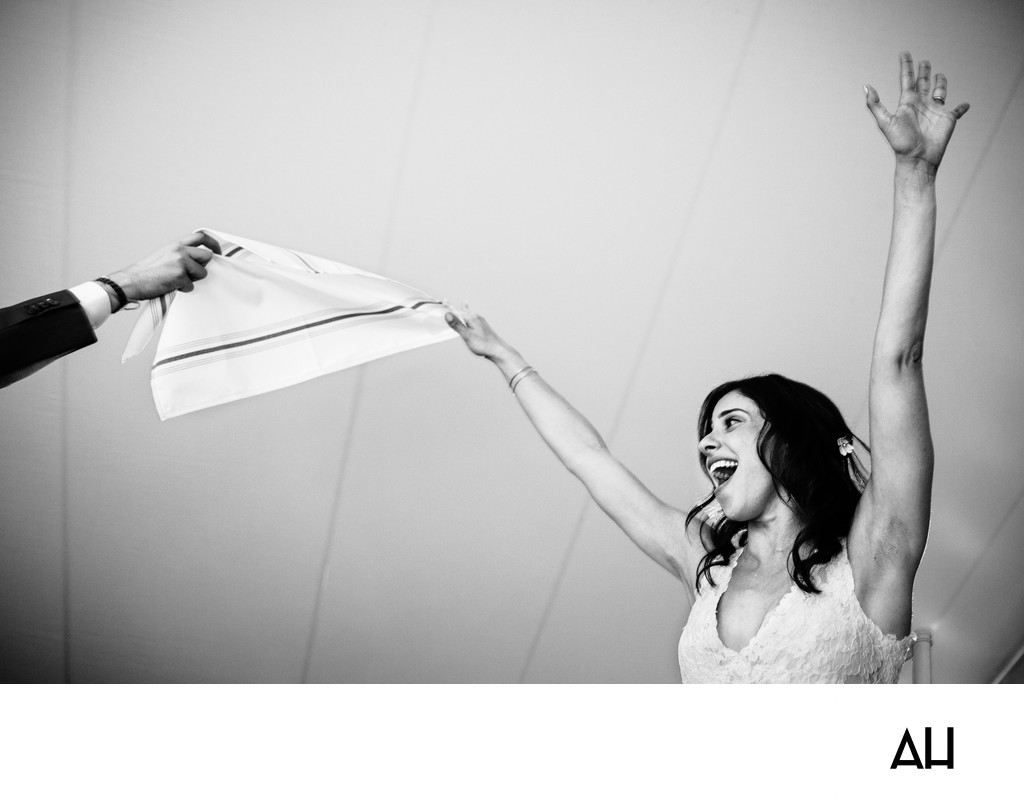
Having the opportunity to be a Jewish Wedding Photographer is a true privilege. A Jewish wedding is a divine event, grounded in religious and cultural traditions. The wedding day is to be a new beginning for the bride and groom. It is a day when their past mistakes are forgiven as the two become one complete soul.
To mark the day, some couples may choose to fast until they sit to eat their first meal together as man and wife. It is somewhat reminiscent of the fasting that Jewish people do on Yom Kippur (the Day of Atonement). The symbolism means a great deal to some couples who view the decision to fast until they are wed as one of the first commitments they make to each other.
Another important tradition a Jewish Wedding Photographer will witness is the bedeken or veiling of the bride by the groom.It takes place just before the start of the ceremony when the bride’s veil in not yet drawn over her face. The groom approaches his wife-to-be, looks directly at her and then tenderly veils her face.
There are two explanations for the performing of the bedeken. First, the act is said to represent the groom’s love for the bride’s inner beauty – the reason he chooses to marry her being more than physical. Secondly, the historic significance of the bedeken is traced back to the story of Jacob who was tricked into marrying the sister of the woman he loved – because she was veiled before the ceremony. The bedeken ensures this cannot happen again!
The ketubah (a civil document) is often likened to a prenuptial agreement. It is signed by the bride and the groom before the actual ceremony. The ketubah outlines the responsibilities of the husband to his new wife and the framework of their divorce should they choose to end the union. The ketubah is then signed by two witnesses and later it is read for all the guest to hear during the wedding ceremony.
The ceremony takes place under a chuppah - a canopy - which is a symbol of the home the couple will build together. Traditionally, the groom is escorted by his parents to the chuppah and they are followed by the bride and her parents. The parents may choose to remain under the chuppah during the ceremony but this is not a requirement and is not always done.
It is not uncommon for four friends of the bride and groom to hold up the four posts that support the chuppah throughout the ceremony. By doing so, they symbolize the support they offer to the new couple as they begin their new life together. (It is a heartwarming sight and one every Jewish Wedding Photographer is quick to capture and preserve.) The fabric that makes the chuppah is typically a prayer shawl belonging to either the bride or groom or a close family member.
During the ceremony there is the reading of the Sheva B'rachot (or Seven Blessings). This is often done by select family members and friends. The Sheva B'rachot deals with themes of celebration, peace, joy, companionship and the power of love. Contrasting these themes, at the end of the ceremony, the couple (or groom only) stomp on a cloth bag, shattering a glass inside. This is said to signify the hardships they will face together as a married couple.
Once the glass is broken, it is time to celebrate! This is generally marked by shouts of “mazel tov!” all around. The phrase can be loosely translated as “congratulations” or “good luck” and is a way of wishing the couple everything that is good as they set out on this new journey together.
After the ceremony (and before the festivities), the couple moves into yichud. This is approximately 10 – 20 minutes of seclusion. They newlyweds spend the time alone to wind down from the ceremony and reflect on the monumental step they have just taken together. The time may be short, but it is romantic, quiet and a thoughtful way for the couple to begin life together.
It is customary for them to share their first meal together during the yichud. It is thus the perfect way to break the day’s fast if they had decided on following that custom. What they eat during the yichud is not at all dictated by any widespread Jewish customs but some communities ensure that they have food symbolic of the day and of the future.
My goal as a Jewish Wedding Photographer is to capture each moment of tradition and celebration for the couple and their families to cherish in the years to come. Each aspect of the wedding is important and so I ensure that I am fully prepared by knowing what to expect, who will perform what functions and where each special moment will take place.
This particular picture was taken in the midst of the joyful reception which followed the beautifully endearing ceremony. Dancing is a major part of every Jewish wedding reception with the guest often entertaining the seated couple by showing off their very best dance moves.
As is tradition, the bride and groom were lifted into the air on chairs. There is no mistaking the euphoric expression of the bride as she enjoys the evening festivities with her husband, surrounded by the enduring love of family and friends.
The black and white photograph draws attention directly to the bride and the smile on her face. Her eyes are alive with excitement and wonder, and her expression is one of uninhibited delight. This day will be one that the bride and her beloved groom will remember for the rest of their lives together.